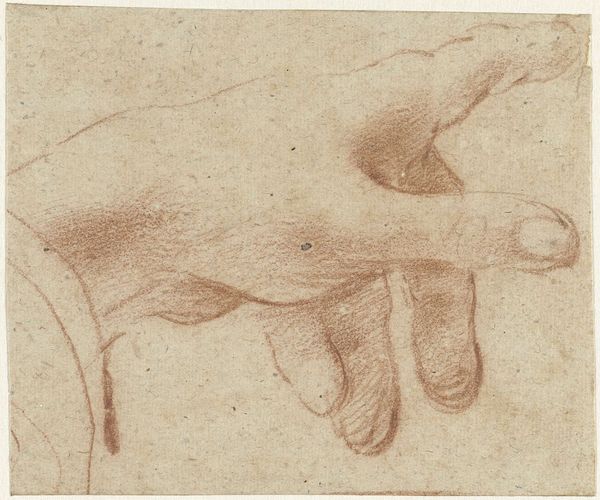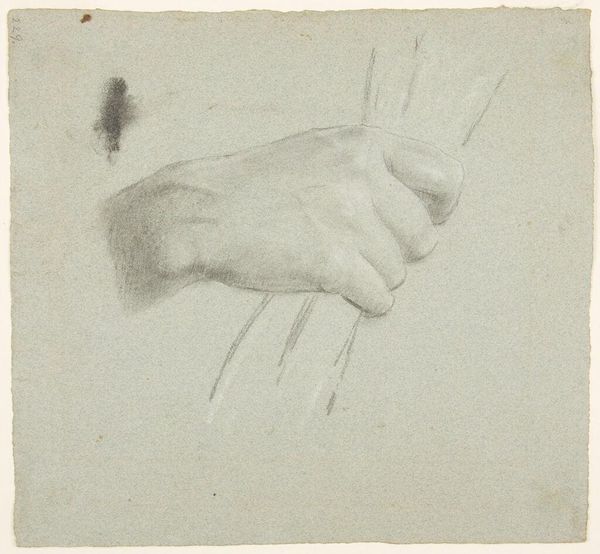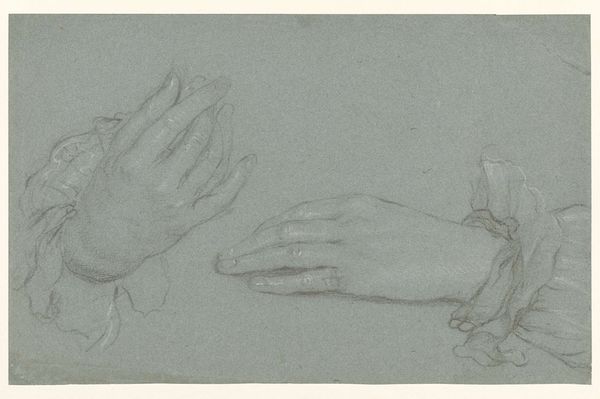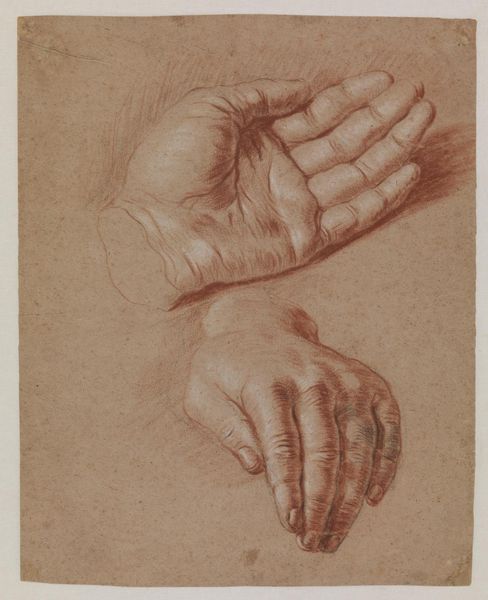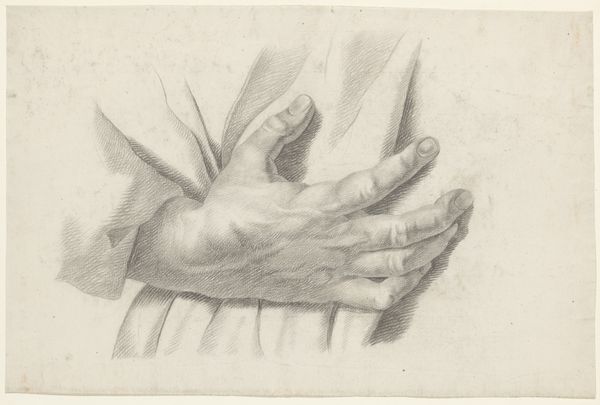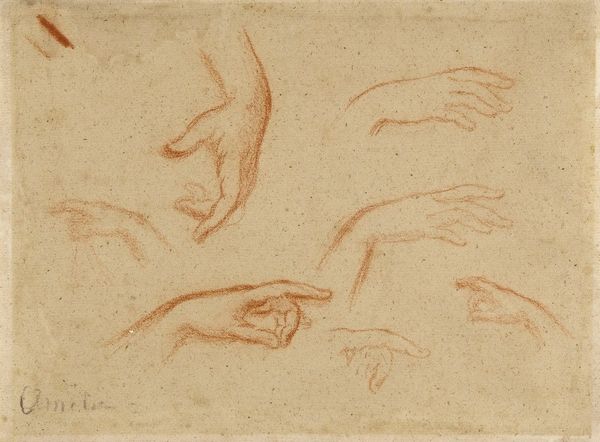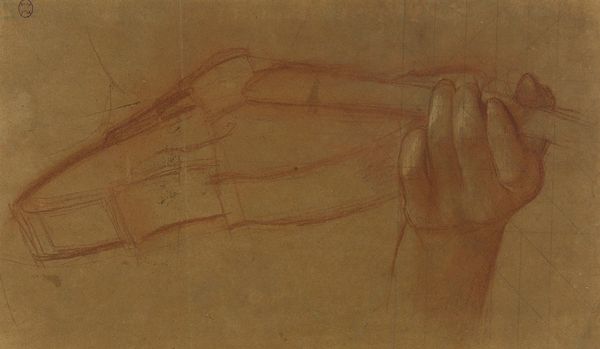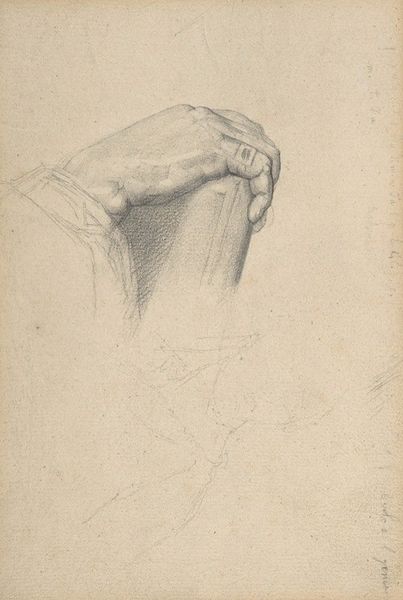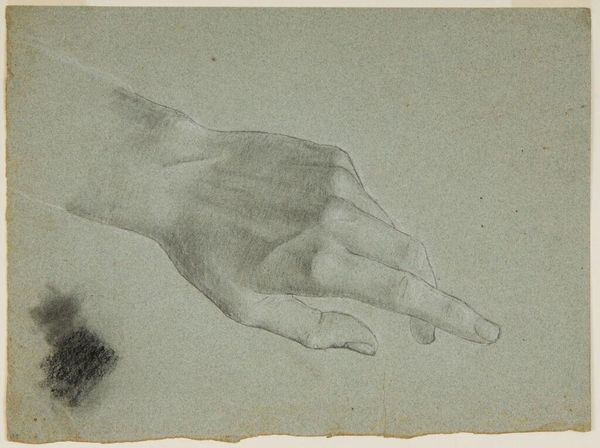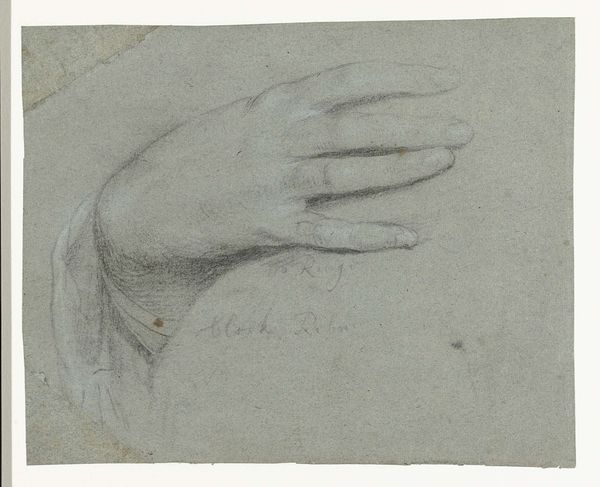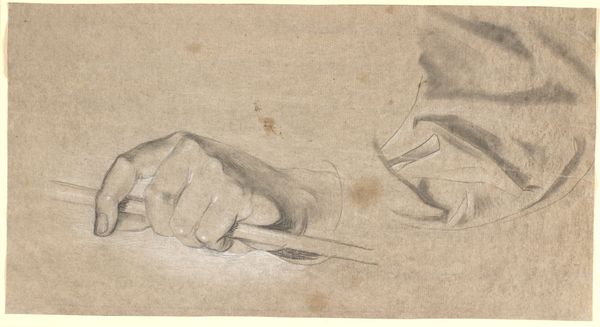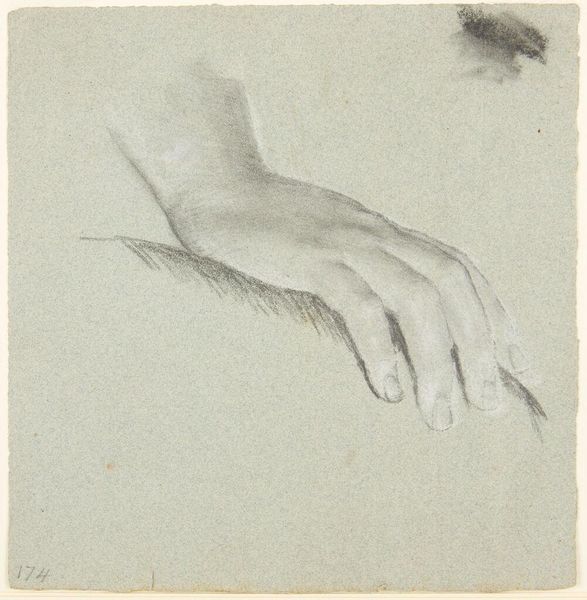
drawing, paper, pencil
#
portrait
#
drawing
#
figuration
#
paper
#
11_renaissance
#
pencil
#
italian-renaissance
Dimensions: height 288 mm, width 189 mm
Copyright: Rijks Museum: Open Domain
Curator: Look at this, a drawing of two clasped hands by Giacomo Cavedone from the Italian Renaissance. It's rendered in red chalk, almost like blood under the skin, on this grey-ish paper. Editor: A prayer, perhaps? Or just...holding on. I immediately sense vulnerability. It's not quite resignation, but something quieter, more internal. The muted tones contribute to that feeling; it's not shouting for attention. Curator: The red chalk helps give the drawing life and that immediate feeling of a warm body present in a cold world. It feels like the skin is soft. Look at how lightly he suggests the forms! So few lines, yet you feel the roundness of the knuckles and the tendons beneath the skin. Editor: And how loaded the mundane becomes when situated in history! Clasped hands—easily piety or prayer. But for whom is it composed? At a moment of great class division, the act of supplicating and to whom become central for our understanding. The power dynamics are quite loud in what you call 'quietude.' Curator: Yes! And notice the texture in those looser marks near the wrist—almost frantic compared to the controlled strokes defining the fingers. Makes you wonder about the pressure points there, like physical and emotional stress meeting in those tiny details. Editor: I think, the "emotion" isn't inherent to the lines themselves, but also to its own relationship to its historical conditions. Cavedone would know to manipulate not just anatomy, but what anatomy signified. He uses that sign to full effect. Curator: That's interesting. I had originally understood that with anatomical sketches from this era you were merely capturing anatomical exactness as best as you could, and only when that anatomical skill was mastered, did one "inject" the "meaning" so to speak... Editor: Hmm... Did he have to choose though? What if 'exactness' and 'meaning' worked hand in hand— pardon the pun!—right from the outset, shaping his approach and final marks on the page? The art isn't separate from its environment, but completely informed by it. Curator: Right. Art as cultural fingerprint. Well, it definitely provides us an intimate little doorway into, maybe not only the man that Cavedone may have understood that to mean back then but how that could shift again for us now. I never expected clasped hands to stir up so much debate. Editor: (chuckles) The best art makes us see, think, feel, all at once. Even if we end up disagreeing a bit.
Comments
No comments
Be the first to comment and join the conversation on the ultimate creative platform.
